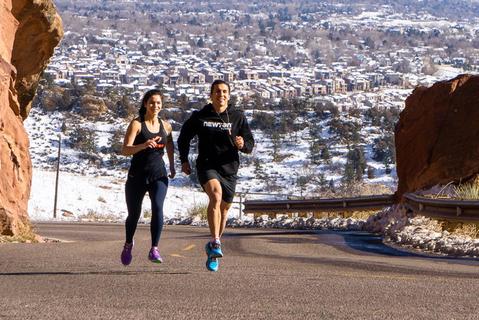
The Importance of Biomechanical Stability
running form5 February 2019
Having good stability is a critical requirement for all runners. Each time your body moves over your foot (called mid-stance in the gait cycle) you are loading two to three times your body weight on your foot and a little less at each successive body part up the bio-mechanical chain – ankle, shin, knee, thigh, hip, etc.
In mid-stance, all this force is on one leg, so you need to have good stability in order to do it safely and efficiently. If you are unable to balance on one leg with all this load, you can’t run. Put simply you will fall over. Runners with poor balance tend to rock side to side since they place their feet in a wide stance.
Stability is not just about balance, since muscular strength is required. Try this exercise to demonstrate:
1. Stand on one leg in front of a full length mirror
2. Keeping your foot flat to the ground, do a shallow squat by flexing your knee hip and ankle as far as possible
3. Make sure your body stays upright (don’t bend forward at the waist)
4. Slowly return to an upright position and keep repeating for as long as you can on two second cycles (one second down, one second up)
This is essential what you are doing (in the vertical axis) while running, but with about one body weight. Imagine doing this with two and a half. Most likely your leg will get tired and you will have to stop due to muscular fatigue.
Now do a few more repetitions and look a little more closely at your alignment (and consequently your stability.) Is your knee tracking straight and true? If not, this is almost certainly happening when you run. As a result, the misalignment at your knee will cause excess stress, which with repetition and load (that would be running) can cause pain and ultimately injury. Typical inures from knee misalignment include medial or lateral knee pain, ITB syndrome and medial shin splints (extrinsic muscles controlling the foot trying to compensate), plus a host more.
The solution is not obvious for most runners.
1. Choose a shoe that is not thick and soft so the surface under your foot is stable. Any shoe that relies on midsole foam for cushioning and is more than about 6 mm thick is probably not good. Soft foams are also unstable, the thicker and softer the worse it gets. Newton shoes do not rely on midsole foam and are essentially hard runner once you load them in a running gait. Newton Running offers two stability models: Men’s Kismet, Women’s Kismet and Men’s Motion and Women’s Motion.
2. Stabilize your leg to control the motion at the knee. The knee is a stable joint (like a hinge) and is controlled at either end. The primary muscle controlling the femur (thigh) in the stance phase of gait is the Gluteus Medius, the big muscle on your butt to the outside. This muscle stops your hip dropping and keeps your knee aligned side to side.
A good strength exercise for leg stability is the single leg shallow squat described above. This can be done while brushing your teeth (you do this anyway right?), with a goal of doing 30 repetitions each leg (two seconds per rep.) You have to do these exercises with precision, otherwise your are practicing poor form and will get good at doing these badly! For some people, this may only be two or three repetitions the first time until failure. Failure is when you loose control of your leg, for example knee doesn’t track straight, your hip drops, rises or you loos balance. Don’t worry, progress can be quite fast so after a few weeks you should be able to do this easily.

